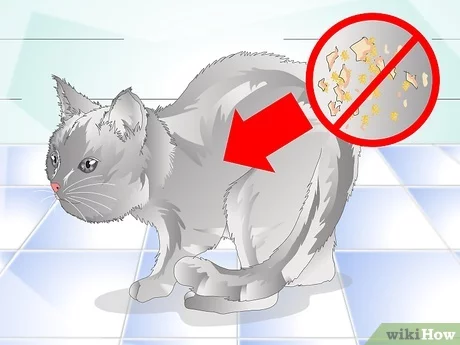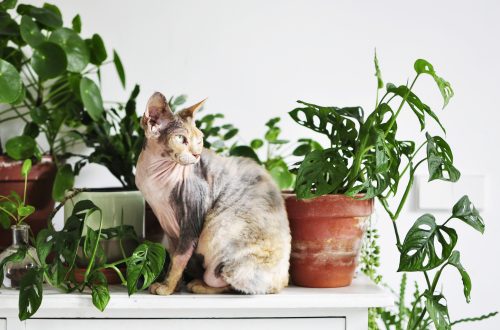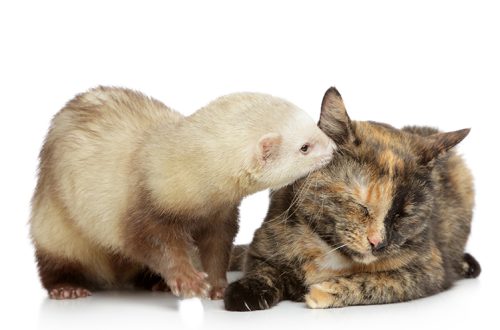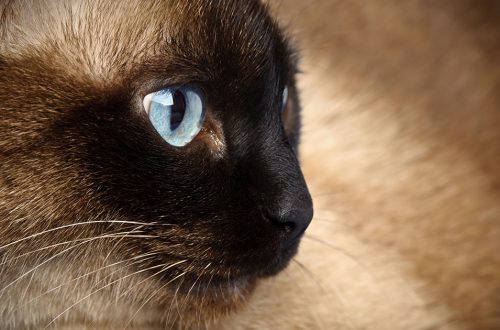
What to do if your cat has dandruff
The problem of dandruff is familiar not only to people, but also to our smaller brothers. Perhaps because of her, the cat will not experience discomfort, but the abundance of desquamated particles of the epithelium on her coat can be a sign of health problems. How to understand if everything is in order with your pet?
Sometimes, due to any failures in the body, a cat may develop dandruff, and then disappear by itself. But that doesn’t always happen. And if dandruff does not go away for a long time or comes back again and again, you need to understand the cause of its occurrence.
Causes of dandruff in cats
There may be several factors for the appearance of white dandruff in a cat:
- fungal skin diseases such as seborrhea.
- Too long exposure to the sun. Exposure to ultraviolet accelerates the process of flaking of skin cells, which leads to peeling and dandruff.
- bacterial infections. Dermatitis often found in cats, but most often affect individual areas of the skin.
- The presence of parasites that damage the protective layer of the skin. It could be fleas, lice or ticks.
- Problems with metabolism. Overweight, sugar diabetes, hypovitaminosis can cause dandruff. This also leads to a lack of vitamins and minerals in the cat’s body, if the pet’s nutrition is chosen incorrectly.
- Allergies. Unaccustomed food, medicines, shampoos, and even household chemicals with which the cat’s bowl is washed can provoke an allergic reaction, and that, in turn, can lead to profuse skin peeling.
- Stress and disturbances in the functioning of the nervous system. Being in a state of stress, a cat can either lick itself too often, or, conversely, not do it at all. This behavior can lead not only to the appearance of dandruff, but also to the formation of hairballs in the pet’s stomach.
- Dry air. This problem is especially relevant for cats living in apartments where air conditioning works in summer and heating devices in winter. The solution can be a humidifier that will provide the moisture needed for the cat’s skin and coat.
- Inappropriate conditions of detention. Dirty beds, a large number of animals in one area, untimely grooming – all this can also cause excessive peeling of the epithelium.
Is it dangerous for a cat
Dandruff itself is not dangerous for a pet, and a small amount of white scales on the coat can even be the norm. But often dandruff accompanies seborrhea and other fungal diseases, so it is better to show the animal to the doctor, especially if the cat has dandruff and falls out. wool.
Treatment of dandruff
To rid your pet of dandruff, it is necessary to establish the cause of its formation. The veterinarian will examine the animal, take a skin scraping and prescribe the appropriate treatment. These can be special shampoos or medicines for oral administration.
If dandruff is caused by external causes, it is necessary to eliminate them and carefully monitor the maintenance and nutrition of the cat. Self-treatment at home is not recommended.
Preventive measures
Any disease is easier to prevent than to treat, so it is important to follow the measures prevention:
- regular check-ups at the veterinary clinic;
- timely treatment of parasites;
- selection of food suitable for the pet;
- keeping clean the trays and beds of the cat;
- wet cleaning several times a week and the use of a humidifier during the heating season;
- proper care of the cat’s coat.
These simple measures will help to avoid problems with dandruff in a cat, otherwise you should contact your veterinarian.
See also:
- When to Call the Veterinarian
- Signs of aging in a cat: diseases and care of an animal
- Your cat and veterinarian





